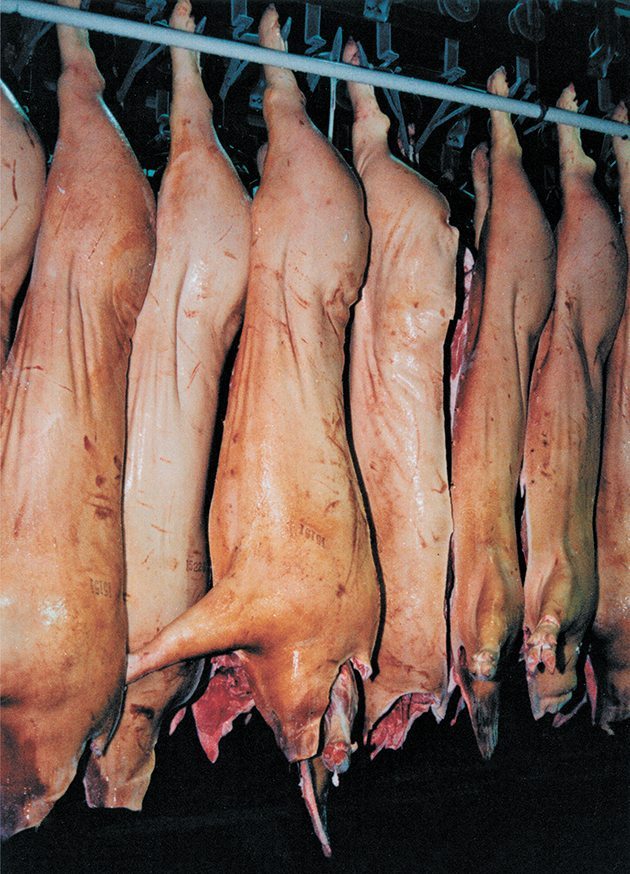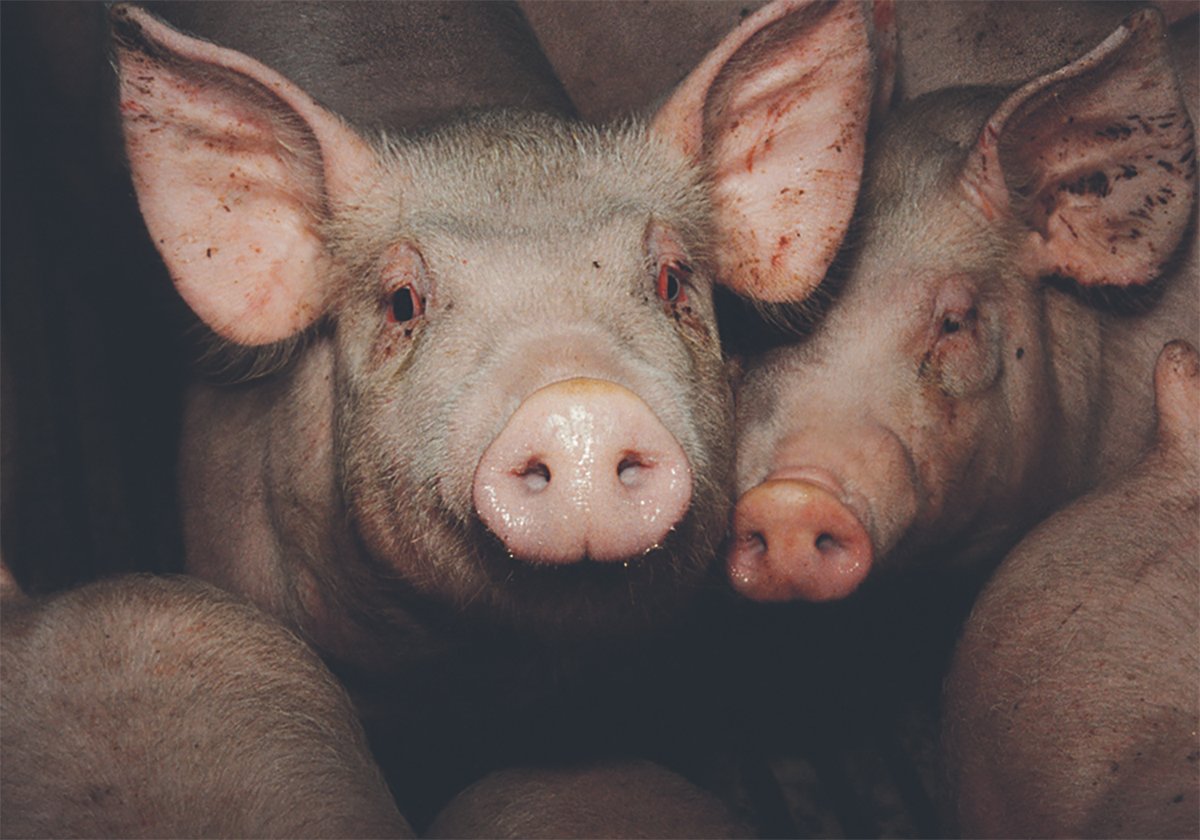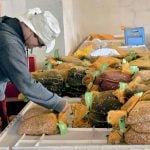MOOSE JAW, Sask. — A small pork company in Saskatchewan has adopted a determined approach to keep itself relevant in the competitive world of meat processing.
Moose Jaw’s Thunder Creek Pork is the only federally inspected processing plant in Saskatchewan. Most hogs come from Saskatchewan farms, but the pork may be shipped to nearby stores on Moose Jaw’s Main Street or a restaurant in Japan.
A single carcass can end up in six countries, said Tyler Wiebe, hog procurement manager.
Heads, ears, liver and kidneys may go to China, loins could end up in Japan and legs are sent to the United States.
“We try and sell everything but the oink,” he said.
“The only thing we can’t sell is the large intestines or lungs because we are a scalding plant and they are full of water. We don’t save uteri or pancreas but we do save small intestines for the pharmaceutical industry.”
The plant was taken over by Donald’s Fine Foods in British Columbia in 2010 after previous owners had failed.

It had unsteady first steps before it was able to increase to its daily capacity of 1,200 hogs.
Hog supply was limited when the plant reopened because producers were committed to other contracts and some were distrustful after bad experiences with past owners.
“Our first day was only 40 head and it took us eight hours,” Wiebe said.
However, Donald’s had a strong marketing plan to help the plant through the early rough patches.
“It was the clientele that was already established throughout the company,” he said.
The plant now handles domestic and export pork every day, and four container loads of fresh, chilled pork leave for Japan every week.
Read Also

The Western Producer Livestock Report – October 30, 2025
Western Producer Livestock Report for October 30, 2025. See U.S. & Canadian hog prices, Canadian bison & lamb market data and sales insights.
Japanese clients regularly visit the plant and watch as meat is packed on a container truck. The same people then inspect the meat when it arrives in Japan.
All pigs carry a slap tattoo for identification, and the company can provide full traceback with pictures of producers and hogs if the customer wants it.
The Japanese are particular. Colour meters are used to make sure the pork is the right shade of pink, and four employees are dedicated to check for colour, blood splash, bruises, firmness and proper weight.
The Japanese also want particular breeds of pigs, although they have not asked for higher food safety specifications, said plant manager Steve Ma.
“Our CFIA (Canadian Food In-spection Agency) has done a really good job, and I think they trust our Canadian standards,” he said.
The plant has also received an A plus rating from the international food safety and quality auditor BRC Global Standards, and it is a ractopamine free plant, which means it can ship pork to China.
The farms that sell to the plant range from two to 1,500 sows. It does not offer forward contracts but has pricing agreements to supply pigs that provide a dressed carcass weighing 93 to 98 kilograms.
“The buying radius is primarily Saskatchewan with the radius being about five and a half hours,” said Wiebe.
“All of our hogs are under agreement with (Hutterite) colonies and farmers around here.”
The company offers brands as varied as Primrose Farms, Britco Pork, Savoury Choice and Paradise Valley to identify pigs raised outdoors.
The pasture pigs are raised in B.C. and are processed at the company’s plant in Langley, B.C.
The Moose Jaw plant is probably at capacity at this point because it does not have more cooler space.
“We want to do it as smart as we can because we don’t want to affect our quality,” Wiebe said.
“We’ll take our time in figuring out how we can get more hogs through the plant.”
Wiebe and Ma started working at the plant as teenagers, sweeping floors and doing odd jobs.
Staffing problems are a continuing challenge. The company used temporary foreign workers but backed away when the government changed the program re-quirements.
Six foreign workers are employed at the plant, and it tries to help newcomers become permanent residents.
“Most of them are residents. Most people that came here are already a citizen or a resident,” said Ma.
The plant once experienced 100 percent turnover, but staff is now more stable.
“We have a really good screening program,” said Ma.
“We do an orientation and a walk through the plant to make sure they are comfortable with it and meet the supervisor before orientation. I think that helped quite a bit.”
He conceded that a job in this industry is not for everybody.
“I have been working at this industry for more than 20 years and I have seen a lot of people come and go,” he said.
“It is hard work but to me this job is rewarding because you accomplish something every day.”
barbara.duckworth@producer.com















